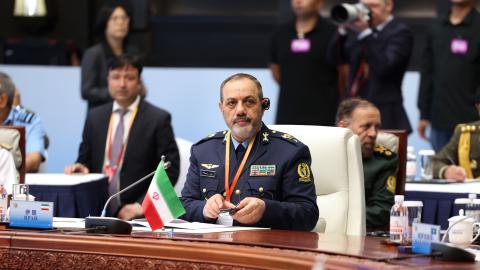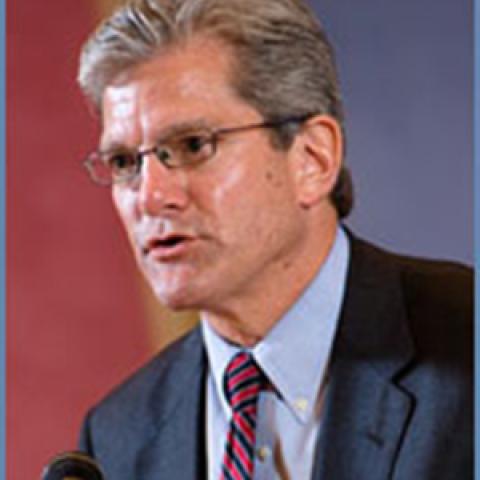The Bradley Foundation has been actively pursuing what we call the new citizenship agenda in Wisconsin, as a way to bring about welfare reform, parental choice in education, and faith-based revitalization of urban neighborhoods. Our experience suggests that none of these reforms would be possible without reliance on smaller, grassroots groups in the central city, most of which, you may be assured, do not appear on the giving lists of the local United Way. You've heard from the leaders of some of these groups over the years--Brother Bob Smith at Messmer High School, and Cordelia Taylor at Family House. They're well-managed oases in very tough neighborhoods.
But others won't be appearing before you anytime soon. They're staffed by one or two poorly paid workers with lots of volunteers, and housed in abandoned store fronts, with water stains on their crumbling ceiling tiles and duct tape on their industrial carpeting. Nonetheless, their value for reform is undeniable. They're not only effective at what they do--combating teen pregnancy, promoting fatherhood, or fighting drug abuse--but they're also authentic expressions of the values and priorities of the neighborhoods themselves--genuine civic institutions, solving their own problems in ways they themselves select and execute.
But many of them are, to put it mildly, managerially challenged. At Bradley, we asked ourselves this question: is there a way to bring them the management help they need, without ruining them--without diverting their precious time and energy away from serving the poorest of the poor, into bureaucratic make-work?
We found an affirmative answer in a local consortium established in 1994 by three other major Milwaukee foundations--the Greater Milwaukee, Faye McBeath and Helen Bader foundations. That consortium, which has since expanded to include most of the larger foundations in Milwaukee--contracts with two well-established experts in non-profit management, Scott Gelzer and Pat Wyzbinski, to run what came to be known as the Nonprofit Management Fund. The Funds mission is, as its founding statement goes, to improve the management effectiveness and efficiency of nonprofit organizations and increase the resources for nonprofit management in the greater Milwaukee area.
Toward that end, the fund provides small grants--up to $10,000--to local non-profits who find themselves facing administrative challenges of any and all kinds: board development, strategic planning, marketing, corporate restructuring, financial management, fundraising. The non-profit group teams up with a management consultant of its own choosing, and comes to the fund with a simple, one-year work plan to tackle the issue at hand. Pat and Scott do the staff screening, which goes considerably beyond what most staffs are willing to do--if necessary, they sit down with a possible grantee, and help them clarify what they seek from the Fund. As you can imagine, what the non-profit thinks it needs--which is usually help with fund-raising--in fact turns out to be other than what it really needs, which is often help with leadership problems or Board failure. The final decision about funding is then made by a committee of representatives of all the Fund's contributors.
Since 1994, over 640 applications for assistance have been received, with 458 grants made--as you can see, a fairly high percentage of awards. Some $2.7 million has been awarded in grants over that period, with a budget of $440,000 for 2002.
In addition to a fairly comprehensive program in Board development--orientation sessions and other training seminars for new non-profit Board members--perhaps the most important additional service the Fund renders is its Diagnostic Clinic, which comes in several levels of intensity. The least intensive involves several meetings with the non-profit staff to help them clarify management issues. But the most intensive supplies a total organizational assessment. That includes meetings with the executive director, attendance at one or two Board meetings, facilitation of a staff meeting, review of all corporate documents, administration of a Board self-assessment, and a management team survey. The final product is a written report to the organization with a completed capacity checklist, plus recommendations for remedying deficiencies. More than 40 Diagnostic Clinics have been completed over the past several years.
For those of us in Milwaukee who are interested in funding small, grassroots groups, the advantages of the Management Fund are substantial. If, as often happens, a worthwhile project approaches us, but isn't fundable because of some glaring management deficiency, we can refer them instead to the fund, to straighten things out first. Furthermore, since most small local non-profits approach the Fund sooner or later, the foundation staffs get a comprehensive look at the administrative situations of most of our local groups, and in a way that doesn't penalize the non-profits. The Fund is, so to speak, a safe place to air dirty management laundry, before program funding is put at stake. Simply sitting together with a substantial number of grant-makers, possessing among themselves decades of experience with local non-profits, in order to discuss their management strengths and weaknesses, opens up a great fount of profound wisdom.
The non-profits as well indicate that the Fund is a blessing. They also understand it to be a safe place to bring their management difficulties, and to work them out with the help of Milwaukees foundations. Too often, foundations expect management expertise, but do nothing to help non-profits acquire it. And the non-profits are able to tackle the problems they themselves have identified--with some help in refining that understanding--using the consultants they themselves have selected and trust.
This has proven to be a useful way to assist the managerially challenged, without drawing too much of their energy away from program and into administration. I know programs like the one run in Houston by Barbara Elliott--what have come to be known as intermediaries--are also promising ways to provide management assistance with a light touch, in a way that genuinely supports, rather than side-tracks, a small organization. I commend to your attention a recent Hudson Institute survey discussing similar intermediaries around the country, edited by Amy Sherman with help from Barbara, and entitled __Empowering Compassion: the Strategic Role of Intermediary Organizations in Building Capacity Among and Enhancing the Impact of Community Transformers__.
Now, why do I seem to be concerned that we bring a light touch to management assistance? Because I believe its important to keep the issue of management in perspective. If a small, scruffy, leaky-ceilinged grassroots group is otherwise doing excellent work in the central city, we need to be very careful about the administrative burdens we ask it to bear. Of course, we must expect every non-profit we fund to be a good steward. But the problem is, every foundation brings with it a very different understanding of what stewardship means in practice.
Some funders want to see a five-year strategic plan; others insist on an active and well-connected Board of Directors; others a detailed personnel manual; others a comprehensive plan for outcomes-based evaluation. And, of course, some funders want to see all this, and much more. But if that's our expectation, then we automatically put our funding out of reach of all but the largest and most sophisticated non-profits--the same non-profits, not coincidentally, that are first in line for government funding, and the most vocal in opposing government spending restraints.
As Paul Light points out in his superb book Making Nonprofits Work -- its a must-read for anyone interested in these management issues the irony is that, for all our current concern about program evaluation, we ourselves have not yet systemically evaluated the relative merits of the various management fads and fancies that wash over the non-profit world. While purporting to hold our grantees to rigorous standards, all too often were simply inflicting on them the latest untested management craze topping the business best-seller list. We might think we're helping them to build a better mousetrap, but all we're really doing is moving their cheese. This is our management problem, not theirs, and until we straighten it out, the light touch to management assistance seems to me the only appropriate way.
On my first visit to Cordelia Taylor's Family House, she took me to the basement of the home that she had turned into a community-based residential senior care facility. There, she showed me tables full of canned goods she bought at rock-bottom rates from Second Harvest. Almost as an aside, she mentioned that it was her son James' job to insure that each can is moved to the front of each neat row according to expiration date, so that nothing is wasted. That tiny detail of my visit--and it could only have come from a site visit, its hardly likely to appear in a grant proposal--told me as much about her approach to stewardship as any number of balance sheets or audited financial statements.
In our grant-making, especially to smaller non-profits, I hope we don't permit a blind obsession with management issues to keep us from funding groups that we can see with our own eyes, and sense from our own experience, are doing effective work in America's low-income neighborhoods. At a time when active citizenship already faces so many barriers to entry erected by credentialism and proceduralism, I would hope that our nation's private foundations, especially those associated with the Philanthropy Roundtable, will do better by the small but critical agents of civic revitalization.
















